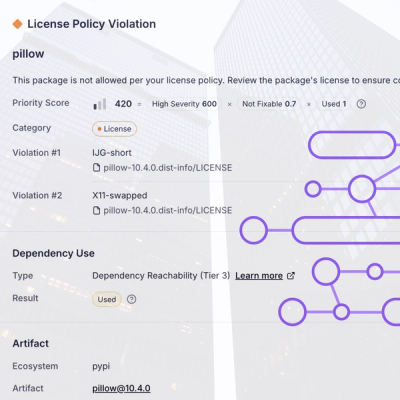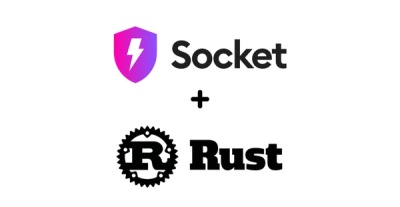
Research
/Security News
Critical Vulnerability in NestJS Devtools: Localhost RCE via Sandbox Escape
A flawed sandbox in @nestjs/devtools-integration lets attackers run code on your machine via CSRF, leading to full Remote Code Execution (RCE).
django-bit-category - freakin fast categories #############################################
:author: Tomas Peterka :licence: GPL
Abstract (and one concrete) Model with tree-like structure using bitwise ID field.
This implementation is very simple and super fast!
Given a category, you can query for related models (products) to the category
and all it's subcategories by
SomeModel.objects.filter(category_id__gte=category.gte, category_id__lt=category.lt)
Source: https://github.com/katomaso/django-bit-category/ Pypi: https://pypi.python.org/pypi/django-bit-category/
The key idea is to reserve a block of bits in model's ID for different levels of
hierarchy. In the basic setup we expect 32 bit ID (can be changed via ID_BIT_WIDTH)
and we give 5 bits for each level (can be changed via LEVEL_BIT_WIDTH).
The IDs looks like this::
XXXXX000000000000000000000000000 # mask for the root category
00001000000000000000000000000000 # first root
00010000000000000000000000000000 # second root
00011000000000000000000000000000 # third root
00001000010000000000000000000000 # first child of the first root
00001000100000000000000000000000 # second child of the first root
...and so on
Getting all descendants in all levels is in hierarchical_instance.descendants,
but under the hood it is as simple as::
SomeModel.objects.filter(category_id__gte=category.gte, category_id__lt=category.lt)
If you just want to use just one of the abstract models then you don't need to do anything special.
Import the abstract model from bitcategory.models import BaseCategory and inherit from it in your
concrete Model. Then make a foreign key in your another model which is going to use categories::
# :file: models.py
from django.db import models
from bitcategory.models import BaseCategory
class MyCategory(BaseCategory):
# BaseCategory already provides fileds name, slug and path
class Meta:
abstract = False
class MyProduct(models.Model):
# some other fields like price, quantity ....
category = models.ForeignKey('myproject.MyCategory', verbose_name=_("Category"))
That is all to your Model definition. Now, provided you have a concrete instance of MyCategory in
variable category, you can query products within the category and all its subcategories by::
MyProduct.objects.filter(category_id__gte=category.gte, category_id__lt=category.lt)
or to get products only for the category by::
MyProduct.objects.filter(category=category)
However, if you want to have the awesome dynamic select boxes in your forms with category in it,
you need to do more
add the bitcategory into your INSTALLED_APPS
add bitcategory.urls into your urls and specify your custom hierarchical
model. If you didn't create your custom hierarchical model, then use our pre-built concrete model
bitcategory.models.Category. We do that in order to be able to respond to AJAX requests which are sent
by the bitcategory.fields.HierarchicalField. The most simple way looks like::
from django.conf.urls import patterns, include, url from myapp.models import YourHierarchicalModel
urlpatterns = patterns('', url('', include('bitcategory.urls'), {"model": YourHierarchicalModel}), )
Now you are ready to show your form with categories in it. First, add
bitcategory.fields.HierarchicalField in the form. When rendering the form into a page, don't
forget to include {{form.media}} into your template for javascripts.
FAQs
Django category app with bitwise tree-like structure of primary key.
We found that django-bit-category demonstrated a healthy version release cadence and project activity because the last version was released less than a year ago. It has 2 open source maintainers collaborating on the project.
Did you know?

Socket for GitHub automatically highlights issues in each pull request and monitors the health of all your open source dependencies. Discover the contents of your packages and block harmful activity before you install or update your dependencies.

Research
/Security News
A flawed sandbox in @nestjs/devtools-integration lets attackers run code on your machine via CSRF, leading to full Remote Code Execution (RCE).

Product
Customize license detection with Socket’s new license overlays: gain control, reduce noise, and handle edge cases with precision.

Product
Socket now supports Rust and Cargo, offering package search for all users and experimental SBOM generation for enterprise projects.